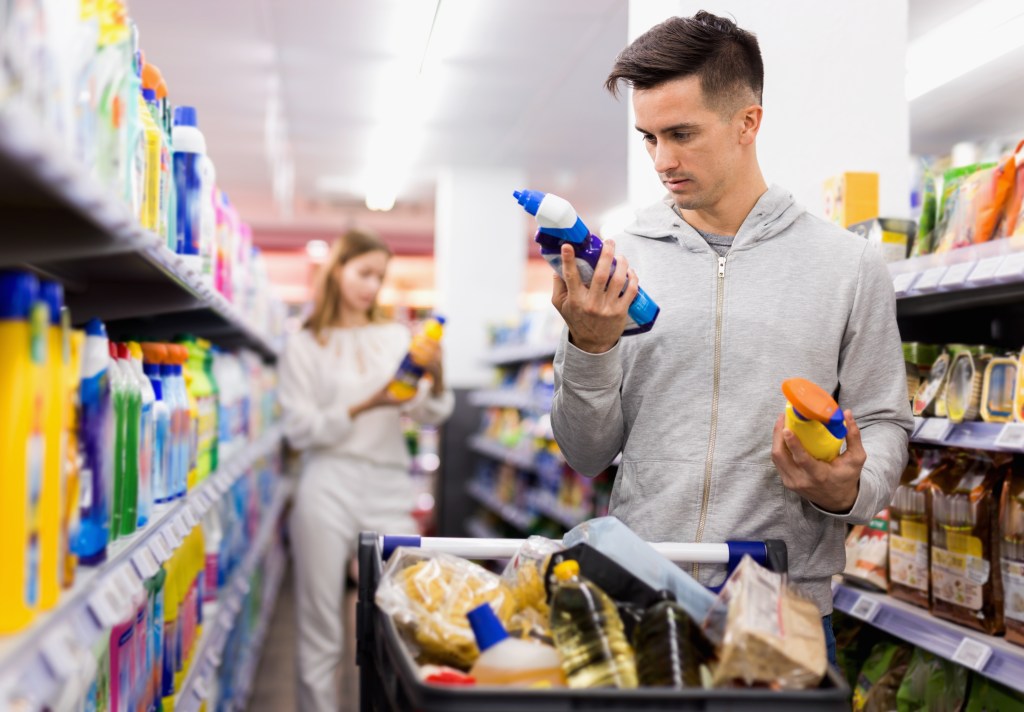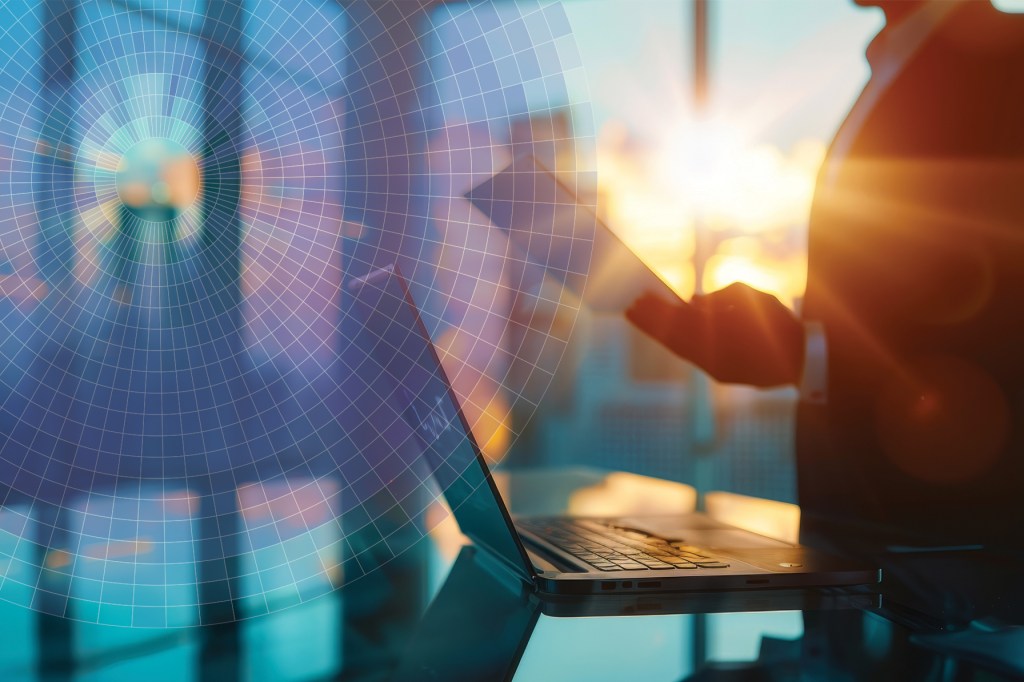A key opportunity
Picture a couple of twenty-somethings stocking up at their favorite grocery store. They’re looking to fill their cart with food that’s good for them and the environment, so they’re paying close attention to the packaging.
They notice, though, that many packages lack any information about sustainability, recyclability or eco-friendliness. Some have a symbol that looks like a triangle of chasing arrows, but they can’t figure out what it means. Frustrated by the lack of information, they just grab whatever looks good.
Their dilemma signals an opportunity for FMCG and packaging companies to not only produce sustainable packaging, but to market it in a way that both educates and entices consumers.

What’s driving sustainability claims:
Government & EPR
Extended Producer Responsibility (EPR) for packaging and paper products has arrived in the United States. There are well-established EPR regulations for packaging in other regions of the world, particularly in the European Union and Canada. Packaging EPR was proposed in 13 states in 2023 and has recently been enacted within California, Colorado, Maine, Oregon and Minnesota.
EPR is an environmental policy approach that uses eco-modulation to determine the cost for the entire packaging life cycle. Resulting tariffs are assigned by package material weight and cost of disposal, with recycling having the lowest tariff. This legislation makes manufacturers responsible for the sustainable end of their product packaging, ideally in a recycling bin, not in a landfill.
The core benefit of EPR is lowering the environmental impact of packaging by optimizing packaging and funding the collection and sorting of packaging for more responsible disposal. More than 150 companies and organizations have publicly committed to support EPR for collecting and recycling packaging at scale.
What’s driving sustainability claims:
Consumer action
Throughout the store, items with sustainable packaging claims are already a $72 billion category that has grown 6.2 percent over four years; just about on pace with the total store’s 6.8 percent growth. And no wonder, as climate-change news stories (more and more violent storms, rising temperatures) are fueling consumers’ desire to protect the planet for them and for their children.
Sixty-one percent of consumers agree that environmental issues adversely affect their current and future health, according to NIQ Retail Measurement and Product Insights data. They’re voting with their wallets, too: From 2018 to 2022, sales of products with sustainability claims grew 34 percent more than products without claims.
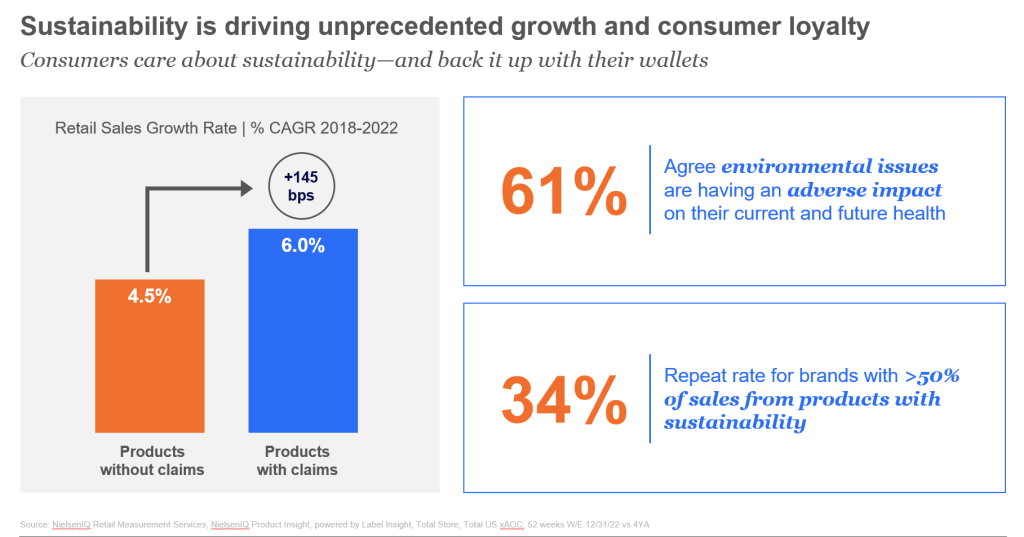
Overall, 95 percent of consumers tell NIQ that they’re trying to live more sustainably, taking actions including recycling, buying products with recyclable packaging and using refillable containers. This momentum will grow stronger, as EPR is gaining traction around the country.
The demographic most likely to respond favorably to packaging claims is Gen Z (ages 12 to 27), which spends the most on environmentally friendly items, according to NIQ research. Yet more than half of this age group cites the lack of information, and hence the confidence, to make such purchases. They’re like the couple in the grocery store: Eager and willing, but not sure which steps to take.
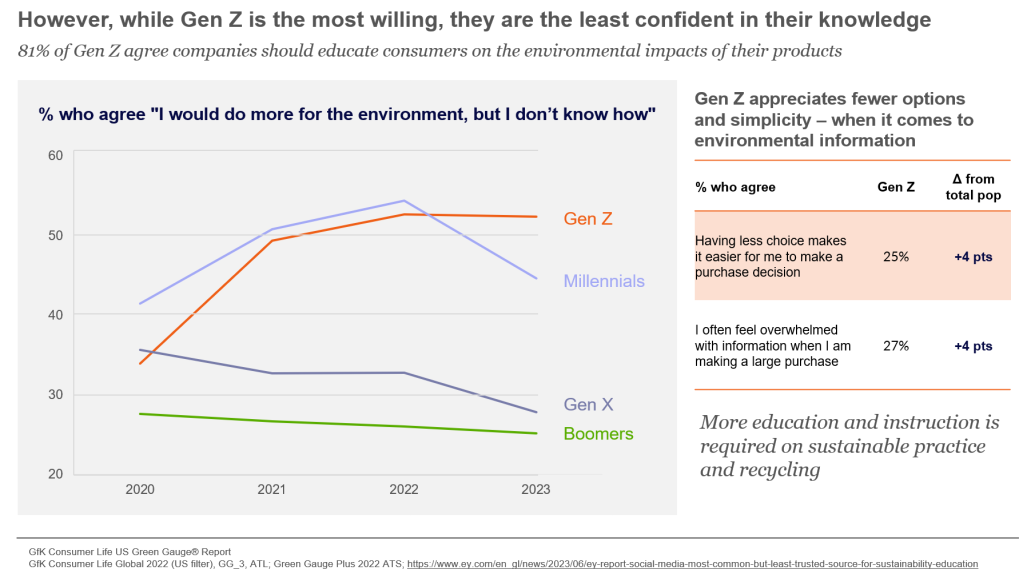
Sustainability claims:
What resonates? What doesn’t?
Consumers want some indication that a package aims to be better for the environment. Of all the claims, “recyclable” is the most developed, showing up on more than 1,239 categories that boast an aggregate 8.4 percent annual sales increase.
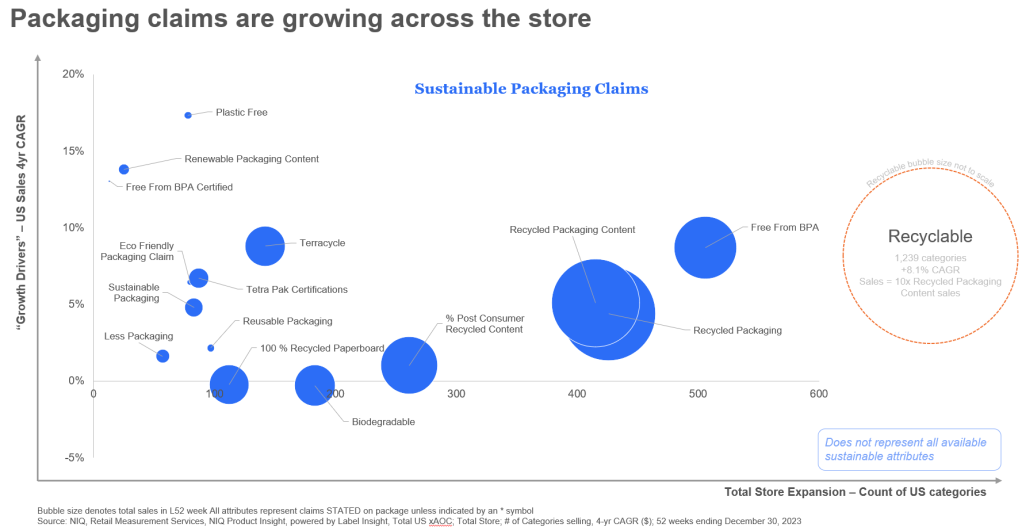
Recycled Packaging, Free from BPA, and 100% Recycled Paperboard are proven trends when it comes to total sales volume. Claims gaining traction include TerraCycle and Tetra Pak Certification. With the growing trend towards packaging EPR, look for potential increased demand for recycled grade materials over virgin.
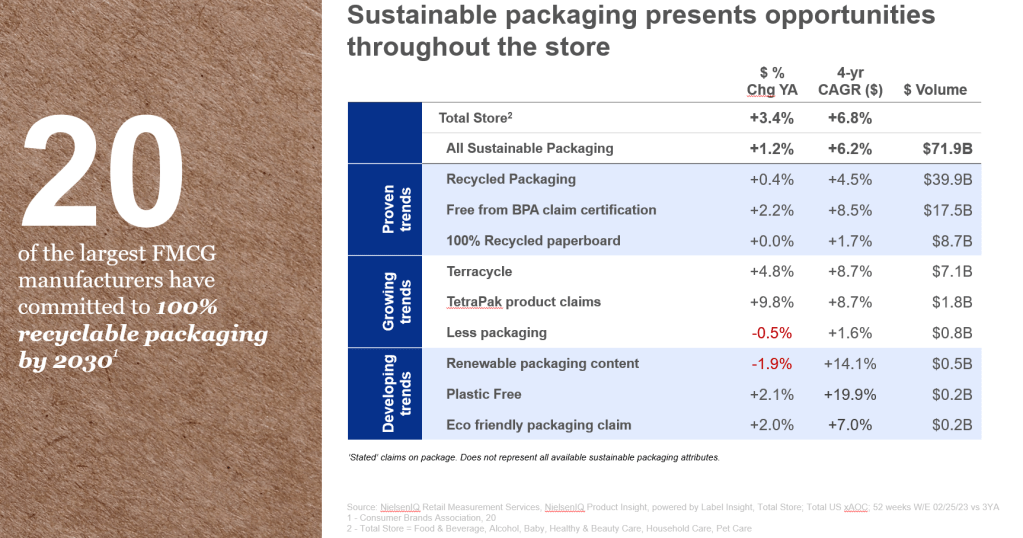
As for the chasing arrows sign, it is a general (and unregulated) symbol that represents recycling, with each arrow representing a step in the recycling process (collecting materials, refashioning them into new products, and selling those products). A number inside indicates what type of plastic resin the product contains.
That symbol may well become rarer as EPR legislation regulating its use is enacted around the country. California, for instance, prohibits its use unless manufacturers can prove that the item bearing the symbol meets certain requirements.
Do Sustainability Claims Drive Sales?
NIQ Data Case study
To gauge the effect of sustainable packaging claims, NIQ studied claims on sales of four breakfast foods — sandwiches, energy drinks, Greek yogurt and ready-to-eat cereal.
Over three years, sales of breakfast sandwiches with sustainable claims rose 35 percent, compared with 28 percent for those without claims. Sales of Greek yogurt with sustainable claims rose 48 percent, compared with 28 percent for yogurt with no claims. Additionally, the products with claims commanded, on average, a 50 percent higher price than the products without claims.
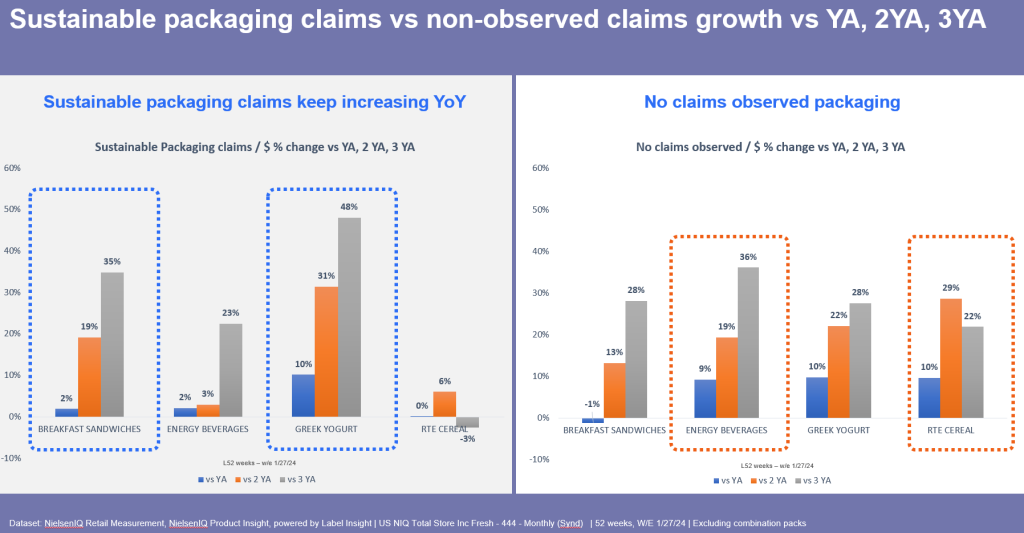
Average prices are also higher with sustainable packaging claims. For breakfast sandwiches, average price went up from $4.90 to $9.40 or 119%. For Greek yogurt it went up 91%. Nominal to lesser growth for energy beverages and RTE cereal. There are many reasons for this based on packaging use, form and materials, so its important to evaluate each category specifically for accurate insights.
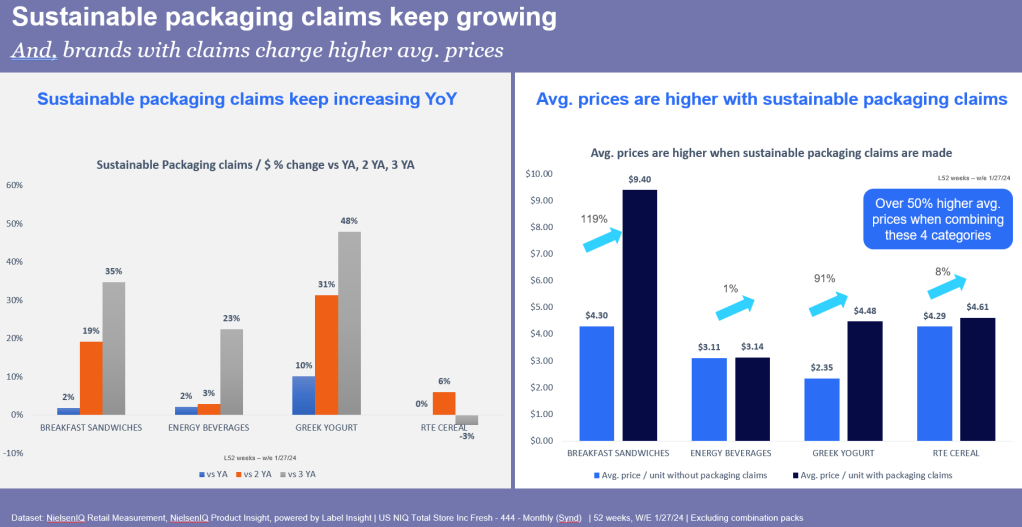
All told, across the categories, a variation of “recycle” represented the majority of claims. In RTE cereal alone, there were 75 different environmental claims, 43 of which used the word “recycle” in some way. “100 percent recycled paperboard” was the top claim for breakfast sandwiches and for Greek yogurt.
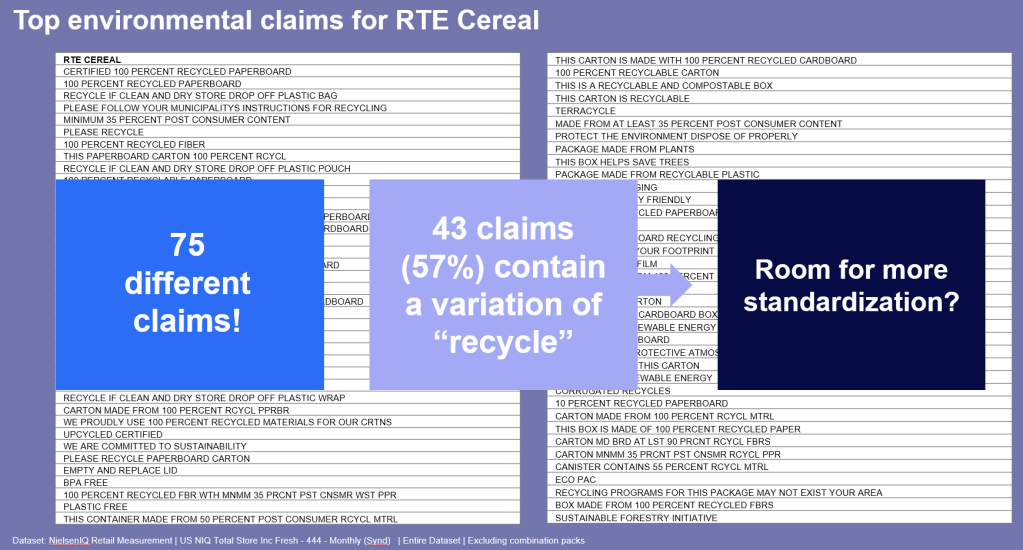
What’s Next
for FMCG, packaging companies and environmental agencies?
Partnering with NIQ can help packaging companies, governmental agencies and FMCG brands
use our packaging claims, material and structure data to track the current state and help improve, monitor, and streamline. This data can validate sustainable packaging claims, help organizations figure out what resonates with their customers and educate consumers on the environmental impact of packaging, including how to recycle it and how to compost it.
Consumers, like our couple in the grocery store, want to make a difference. Data insights and marketing can make sure that next time they leave the store with bags full of products that are good for them, for the planet, and your bottom line.

Our Data, Your difference
From macro to micro, broad to narrow, we’ve got you covered with comprehensive and flexible data intelligence to fuel your next move. Contact us to learn more and get your questions answered.
